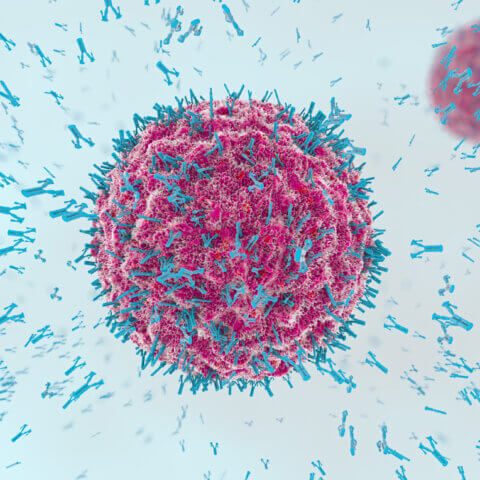Last Updated: September 27, 2024, 10 am UTC
In this blog, we explain the role of clinical pharmacology in drug development and demonstrate how the right strategy can accelerate development under the US Food and Drug Administration (FDA) 505(b)(1) and 505(b)(2) New Drug Application (NDA) pathways.
Regulatory Pathway 505(b)(2) versus 505(b)(1)
In the US, novel new small molecule drug products, including some peptides, are regulated, and approved by the FDA under the Federal Food, Drug, and Cosmetic Act (the “Federal FD&C Act”) under two key regulatory pathways: Section 505(b)(1) and Section 505(b)(2) NDAs. A key difference is that the Sponsor of a 505(b)(1) NDA owns or has right of reference to the safety and effectiveness information versus the Sponsor of a 505(b)(2) NDA leverages information from other drug approval packages and/or published information they do not own or have right of reference to. Typically, new drug development under 505(b)(1) pathway requires significant capital and time and has lower success rate versus the 505(b)(2) pathway, which leverages existing drug approvals and publicly- available scientific information.
Clinical Pharmacology in Drug Development
Clinical pharmacology in drug development covers all aspects of interaction between humans and drugs. Clinical pharmacology studies include both in vitro studies using human biomaterials and in vivo human studies and are focused on characterizing pharmacokinetics (PK) (e.g., absorption, distribution, metabolism, and excretion (the ADME properties) – what the body does to the drug), pharmacodynamics (PD) (what the drug does to the body; both the desired drug activity and the adverse effects) and PK/PD relationships of the drug. Clinical pharmacology also includes an evaluation of the impact of intrinsic factors (e.g., age, gender, race/ethnicity, genomics, and organ dysfunction) and extrinsic factors (e.g., food effect, smoking, and drug-drug interactions) on drug exposure and response.
Clinical Pharmacology Programs Under 505(b)(1) Versus 505(b)(2) Pathways
Drug product approval via the 505(b)(1) pathway requires a full assessment of clinical pharmacology aspects including the Mechanism of Action (MOA), ADME properties, characterizing single dose and multiple dose PK and PD, evaluation in specialized populations like geriatrics, renal and/or hepatic impairment, drug-drug interactions, potential for QTC prolongation, PK/PD effect.
In addition to more traditional clinical pharmacology approaches, Model Informed Drug Development (MIDD) is now being used to tailor clinical pharmacology development, leading to potential reductions in overall clinical programs and higher success rates. For example, PK and PD information generated in early phase development is integrated in population modeling techniques which guides late phase development, such as choosing a dose and dosing regimen that has the high probability of demonstrating efficacy while reducing side effects. In another example, physiological based PK modeling can be used to characterize drug-drug interaction potential without conducting specific clinical studies. These modeling techniques can help to reduce the size and duration of the overall clinical pharmacology program.
In contrast to 505(b)(1) programs, the 505(b)(2) pathway provides added flexibility and typically reduces the overall clinical pharmacology program based on successful bridging to previously approved product(s) (i.e., Listed Drugs [LDs]) and/or published scientific literature. Like 505(b)(1) programs, MIDD approaches can be utilized to justify any PK differences that do not affect PD or efficacy, apply for a biowaiver, etc. and reduce the overall clinical pharmacology program.
The following table compares the clinical pharmacology programs under the 505(b)(1) and 505(b)(2) pathways.
| Clinical Pharmacology Aspect | 505(b)(1) | 505(b)(2) |
| Mechanism of Action (MOA) | Full assessment | Potential reliance on LD or literature data if same or similar proposed indication |
| ADME | Full assessment | Potential reliance on LD or literature data if similar formulation or route of administration. For new route, can typically leverage general ADME information from LD or literature. |
| Single Dose PK, Multiple Dose PK, Renal Impairment, Hepatic Impairment, Geriatric, Drug-Drug Interactions, QTC Prolongation Potential | Full assessment | Relied upon successful scientific bridging |
| PK Bridging Study | Not Applicable | Scientific bridge typically established in a comparative bioavailability study |
| Pediatric | Full assessment | Case by case assessment |
| PK/PD Effect | Full assessment | Relied upon successful scientific bridging |
| Bioanalytical Method Development and Validation | Full assessment | Full assessment |
| Model Informed Drug Development (MIDD) | Strategies including Predict human dose response from nonclinical data, refine clinical doses and dosing regimens, dose adjustment in special populations, etc. | Similar to 505(b)(1) plus, establish a scientific bridge between the Sponsor’s product and the LD or literature, especially for more complicated changes such as immediate release daily oral tablet to monthly long-acting intramuscular injection |
Case studies
In this section, we present two case studies in which strategic clinical pharmacology decisions were made that helped to expedite our Clients’ clinical development programs.
505(b)(1) case study:
A Sponsor was close to submitting an NDA for their New Chemical Entity (NCE) under the 505(b)(1) pathway and asked Premier to conduct a readiness assessment. Premier clinical pharmacology experts determined that a renal impairment study and a Thorough QT (TQT) study were needed for the NDA. Premier was able to avoid these two key clinical studies by conducting PK/PD modeling to determine dose adjustments in renally impaired subjects and a Concentration-QT (C-QT) analysis to demonstrate that the NCE was unlikely to cause cardiac effects, which supported a successful TQT waiver.
505(b)(2) case study:
In a comparative bioavailability PK bridging study, the Sponsor’s product (an extended-release product) and the LD (immediate release product) were not bioequivalent. The area under the curve (AUC) for both products were bioequivalent but the rate of exposure (Cmax and Tmax) was dissimilar. Premier experts used MIDD to tailor the clinical development program using a comparative PK/PD approach to build a scientific bridge between the Sponsor’s product and the LD despite the lack of bioequivalence. This provided a scientific bridge to the LD’s safety and efficacy information and avoided additional and costly clinical efficacy and safety studies.
Conclusions
MIDD can be used in both 505(b)(1) and 505(b)(2) clinical pharmacology programs to reduce the size of the programs and expedite development by avoiding costly clinical studies.
Accelerate Drug Development with the Right Partner
As we have discussed, the assessment of clinical pharmacology in drug development programs includes multiple aspects and approaches vary from product to product. Each drug development program is unique but there are opportunities to be strategically creative to reduce the size and time to market in both 505(b)(1) and 505(b)(2) programs. It is important to work with a partner with experience and who recognizes these opportunities. Leverage our team’s expertise and holistic approach for streamlining and accelerating your clinical programs and addressing critical clinical issues, contact us.

 Webinar
Webinar 


 Perspectives Blog
Perspectives Blog 